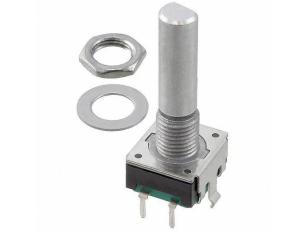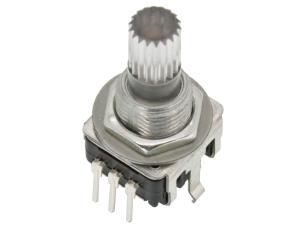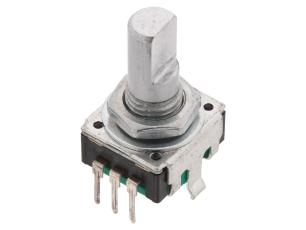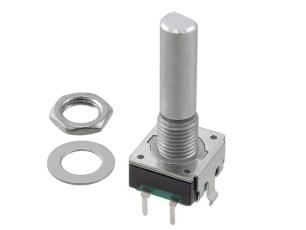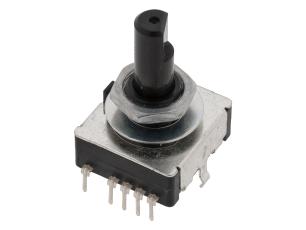A rotary encoder is an electromechanical component that converts the rotational motion of a shaft into electrical pulses. These pulses are used to determine the shaft’s angular position, direction of rotation, and in some cases, rotational speed. Rotary encoders are commonly used in robotics, motor control, volume adjustment, as well as in projects involving Arduino, ESP32, and Raspberry Pi.
There are several types of rotary encoders. The most common ones are:
1. Incremental Rotary Encoder
This is the most widely used type. It generates pulses as the shaft rotates. The output signal typically consists of two square waves (channels A and B) that are 90 degrees out of phase with each other. A microcontroller is used to determine position, direction of rotation, and sometimes rotational speed. The resolution (number of steps per revolution) is specified as PPR (pulses per revolution).
2. Absolute Rotary Encoder
As the name suggests, an absolute encoder provides the exact angular position of the shaft being measured. It generates a binary code that uniquely represents each angular position. This enables direct reading of the absolute position without requiring a reset, even after a power loss. The resolution (number of steps per revolution) is primarily determined by the encoder's bit depth, for example 4-bit, 8-bit, etc.
A rotary encoder is an electromechanical component that converts the rotational motion of a shaft into electrical pulses. These pulses are used to determine the shaft’s angular position, direction of rotation, and in some cases, rotational speed. Rotary encoders are commonly used in robotics, motor control, volume adjustment, as well as in projects involving Arduino, ESP32, and Raspberry Pi.
There are several types of rotary encoders. The most common ones are:
1. Incremental Rotary Encoder
This is the most widely used type. It generates pulses as the shaft rotates. The output signal typically consists of two square waves (channels A and B) that are 90 degrees out of phase with each other. A microcontroller is used to determine position, direction of rotation, and sometimes rotational speed. The resolution (number of steps per revolution) is specified as PPR (pulses per revolution).
2. Absolute Rotary Encoder
As the name suggests, an absolute encoder provides the exact angular position of the shaft being measured. It generates a binary code that uniquely represents each angular position. This enables direct reading of the absolute position without requiring a reset, even after a power loss. The resolution (number of steps per revolution) is primarily determined by the encoder's bit depth, for example 4-bit, 8-bit, etc.















